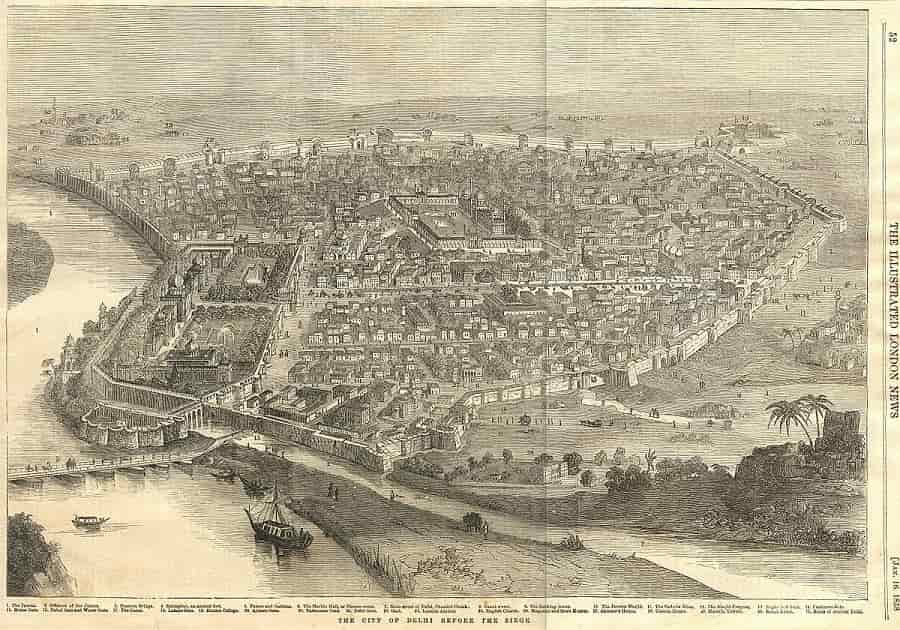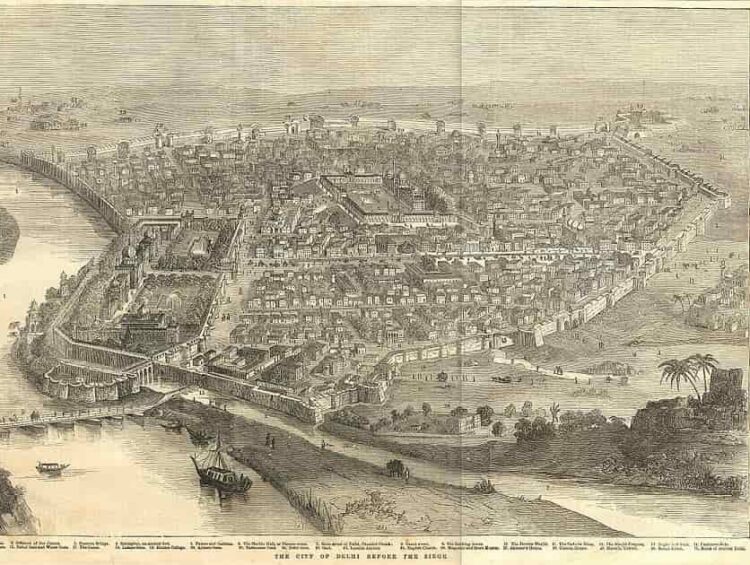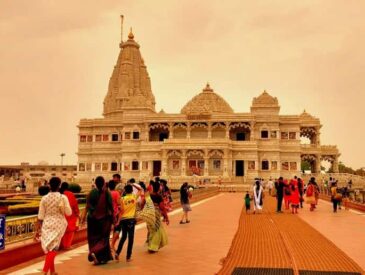Old Delhi, also known as Shahjahanabad, is one of the most historically significant areas in the Indian capital. Founded by the Mughal Emperor Shah Jahan in 1639, Old Delhi has witnessed centuries of political upheavals, cultural shifts, and architectural marvels. Its rich history is interwoven with the broader historical narrative of Delhi, which has been a focal point for various empires throughout Indian history. This exploration delves into the origins, development, and enduring legacy of Old Delhi.

The Evolution of Delhi
Delhi’s history is marked by several significant urban developments, each representing a different era and ruling power.
- Early Cities of Delhi:
- Lal Kot (8th Century): The story of Delhi begins with Lal Kot, established by the Hindu king Anangpal Tomar in the 8th century. This initial fortification laid the groundwork for future developments in the region.
- Qila Rai Pithora (11th Century): In the 11th century, King Prithviraj Chauhan expanded and renamed Lal Kot to Qila Rai Pithora, marking a significant expansion in the city’s scale and prominence.
- Medieval Delhi:
- Mehrauli (12th Century): Founded by the Mamluk dynasty, Mehrauli became an important center under the rule of various Sultanates.
- Siri (1303 AD): The city of Siri was established by Allauddin Khilji, representing a new phase in Delhi’s urban evolution.
- Tughlaqabad and Jahanpanah (14th Century): The Tughlaq dynasty introduced Tughlaqabad and Jahanpanah, further expanding Delhi’s urban landscape.
- Ferozabad (1530 AD): Founded by Feroze Shah Tughlaq, Ferozabad added to the historical tapestry of Delhi with its own unique contributions.
- Mughal Era:
- Deen Panah Shergarh (16th Century): Built by Sher Shah Suri and later occupied by Emperor Humayun, Deen Panah Shergarh was part of the ongoing evolution of Delhi as a political center.
Suggested Tour: New & Old Delhi Tours
The Birth of Shahjahanabad
The Mughal Empire, known for its architectural and cultural advancements, reached its zenith under Shah Jahan, who decided to build a new city to serve as the Mughal capital.
- Founding Shahjahanabad (1639):
- Reasons for the Move: Shah Jahan’s decision to found Shahjahanabad was driven by both practical and sentimental reasons. Agra, the previous capital, was becoming unsuitable due to overpopulation, erosion, and overbuilding. Shah Jahan wanted to create a new, magnificent city that would reflect his grandeur and legacy.
- Selection of Location: Shah Jahan chose a location between Agra and Lahore, believed to be the Axis Mundi, or the center of the earth. This site was strategically chosen for its centrality and symbolic significance.
- Architectural Planning and Construction:
- Design: Shahjahanabad was designed with meticulous attention to detail, drawing inspiration from Hindu texts such as Vastu Shastra. The city was initially enclosed by a mud wall, which was later replaced with red sandstone due to structural issues.
- Red Fort: The Red Fort, or Lal Qila, was the centerpiece of Shahjahanabad, serving as both a royal residence and a symbol of Mughal authority. Its impressive architecture included the Diwan-i-Aam and Diwan-i-Khas, showcasing Mughal splendor.
- Jama Masjid: The Jama Masjid, built by Shah Jahan’s daughter Jahanara Begum, was one of the largest mosques in India and a central religious site.
Life in Shahjahanabad
- Urban Structure and Markets:
- Chandni Chowk: One of the most famous markets of Old Delhi, Chandni Chowk, was established by Jahanara Begum. It was designed to be a bustling commercial hub, reflecting the economic vibrancy of Shahjahanabad.
- Other Markets: The city also housed other important markets such as Chawri Bazaar (opened in 1840) and Khari Baoli (opened in 1850), which became integral to the city’s economy.
- Cultural and Social Life:
- Public Spaces: Shahjahanabad featured various public spaces and gardens, including Begum ka Bagh, created by Jahanara Begum. These spaces were designed for social gatherings and festivals.
- Architectural Contributions: The city was enriched by contributions from the Mughal royal family, including gardens, havelis, and religious structures.
Decline and Transformation
- Political Turbulence:
- Aurangzeb’s Reign: The city faced challenges during the reign of Aurangzeb, who shifted the focus of the empire away from Shahjahanabad. The decline of Mughal power led to instability and conflict within the city.
- British Influence: The arrival of the British and their strategic manipulation of Delhi’s geography and politics led to significant changes. The construction of New Delhi by the British in the early 20th century marked a shift from the Mughal past to a colonial future.
- Post-Mughal Era:
- Impact of Revolt: The 1857 Revolt against British rule had a profound impact on Old Delhi. The suppression of the revolt led to the destruction and transformation of parts of the city.
- Cultural Preservation: Despite these upheavals, Shahjahanabad retained much of its historic charm. The area continued to be a cultural and commercial hub, preserving its legacy through its markets, architecture, and vibrant street life.
Also Read:
- Shopping Destinations in Delhi
- Famous Devi Temples in Delhi
- Places to Visit in Delhi with Family
- Best Nightclubs in Delhi
Modern-Day Old Delhi
- Cultural and Architectural Legacy:
- Historical Significance: Today, Old Delhi stands as a historical testament to its Mughal past. The surviving architecture, including the Red Fort and Jama Masjid, continues to attract tourists and historians alike.
- Preservation Efforts: Various efforts have been made to preserve and restore the historical sites and markets of Old Delhi, maintaining its cultural heritage amidst modern development.
- Tourism and Local Life:
- Attractions: Old Delhi remains a popular destination for those interested in experiencing the traditional aspects of Delhi. Its markets, street food, and historical landmarks offer a glimpse into the past.
- Cultural Experience: The area’s unique blend of old-world charm and contemporary life provides a rich, immersive experience for visitors.
Conclusion
Old Delhi, with its rich history and vibrant present, is a microcosm of the broader historical evolution of Delhi. From its origins as Lal Kot to its transformation under Shah Jahan as Shahjahanabad, and its subsequent role as a cultural and political center, Old Delhi represents a tapestry of historical experiences. The city’s enduring charm, despite centuries of change, reflects its significance as a historical and cultural landmark in the Indian capital.
- Suggested Tour: Old Delhi Heritage Tour





